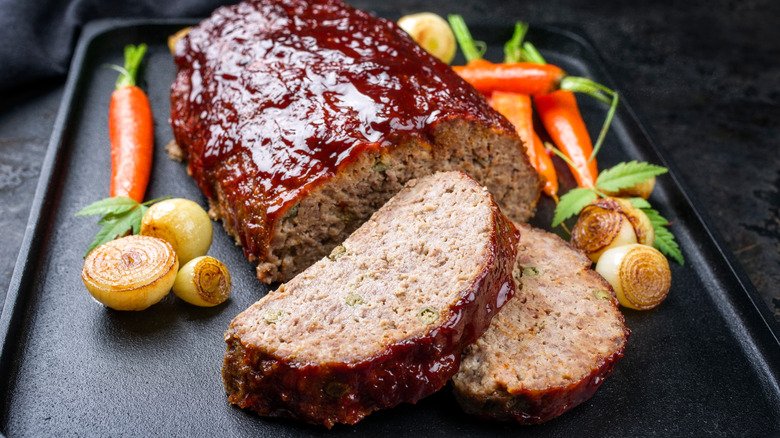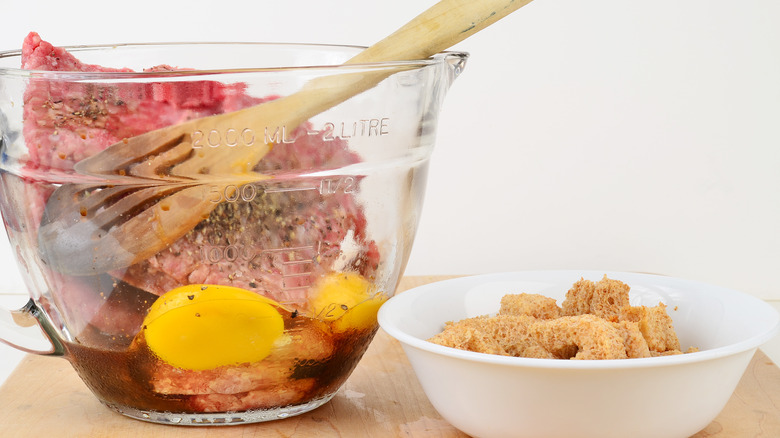The Real Reason Your Meatloaf Is Falling Apart
If you pull your meatloaf out of the oven after an hour of baking and realize that it's basically a crumbly mess, you likely did one thing wrong — you didn't include enough of your binding ingredient. Right after your meat, your binder, Frugal Cooking attests, is your most important meatloaf ingredient. It keeps everything together, creates the right meatloaf texture, and keeps your meat moist through the long cooking process.
Traditionally, meatloaf recipes will include bread and eggs as a binder, either fresh or stale bread, ran through a blender (some prefer the texture of breadcrumbs) or simply cut down into small pieces, plus an egg or two. Together, the bread and eggs keep your ground beef or sausage, as well as any diced, cooked veggies, all together in that wonderful loaf shape, so when you cut into your cooked meatloaf, everything stays in one place, versus crumpling into bits of cooked, ground meat.
But what if you don't want to add bread and eggs to your meatloaf?
If you're not keen on adding bread and eggs to your meatloaf, or you're following a gluten free or vegetarian/vegan diet, and you want to avoid either or both ingredients, you do have some other options. You're not restricted to using only bread and eggs as your binding ingredients. The Cookful recommends replacing bread with a gluten free bread, breadcrumbs, or crackers, but other options include oatmeal, rice, barley, dehydrated vegetables, pork rinds, boxed stuffing, dried soup mix, or corn flakes.
Some home cooks even like mashed potatoes as a replacement for the bread. According to The Kitchen Revival, you can replace the eggs with olive oil, a mixture of flax seeds and water, mayonnaise, gelatin, or chia seeds. Whatever binders you choose to add to your meatloaf, the chefs on the TODAY staff suggest further refining your 'loaf by using a high-fat meat, topping the meatloaf with a glaze (a ketchup-brown sugar mixture or barbecue sauce are both popular options), and then letting it rest after cooking, to help with slicing and retaining moisture.

